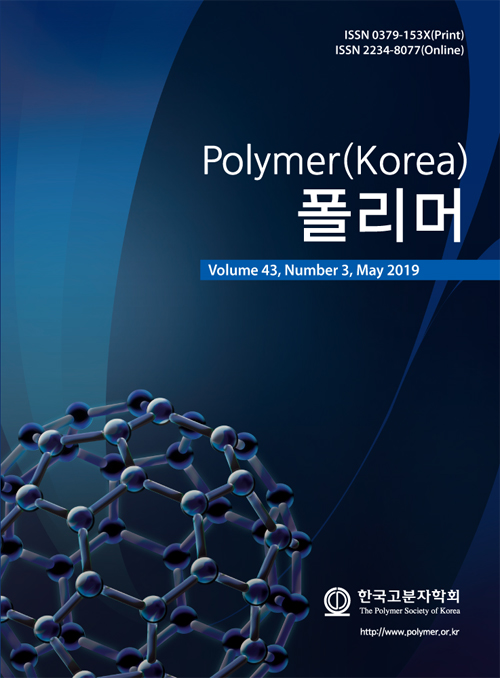- Polycaprolactone Composite Membranes Containing Polyphenol -Loaded Hydroxyapatite Nanoparticles for Bone Regeneration
Department of Biomedical Engineering, Daegu Catholic University, Gyeongsan 38430, Korea
- 폴리페놀이 도입된 하이드록시아파타이트 나노입자를 함유하는 골재생용 폴리카프로락톤 복합 멤브레인
대구가톨릭대학교 의공학과
To provide adequate conditions for the regeneration of damaged bone, it is necessary to develop porous membranes with anti-oxidant and anti-inflammatory activities. In this study, we fabricated composite membranes comprising polycaprolactone (PCL) and epigallocatechin gallate (EGCG)-introduced hydroxyapatite (HA) (HAE) nanoparticles using an electrospinning process. The resulting composite membranes exhibited completely interconnected pore structures. The average diameter of the composite membranes was slightly decreased by the addition of the HAE nanoparticles. Cytocompatibility test results revealed that the proliferation and differentiation of osteoblasts (MC3T3-E1) on the membranes increased with the high content of HAE nanoparticles because of the improved anti-oxidant and anti-inflammatory properties of the membranes. These results suggest that the PCL composite membranes are an ideal biomaterial for bone tissue regeneration.
손상된 뼈가 재생될 수 있는 적절한 환경을 제공하기 위해서는 항산화성과 항염증성을 가지는 다공성 멤브레인의 개발이 필요하다. 본 연구에서 폴리카프로락톤(polycaprolactone, PCL)과 에피갈로카테킨 갈레이트(epigallocatechin gallate, EGCG)가 함유되어 있는 하이드록시아파타이트(hydroxyapatite, HA) (HAE) 나노입자를 이용하여 전기방사법으로 복합 멤브레인을 제조하였다. 제조된 복합 멤브레인은 상호연결된 기공구조를 가지고 있었다. 복합 멤브레인에 도입된 HAE 나노입자의 양이 증가할수록 섬유의 직경은 약간 감소한다는 것을 확인하였다. 세포적합성 시험 결과 복합 멤브레인에 HAE 나노입자를 많이 도입할수록 항산화성과 항염증성의 개선에 의해서 조골세포 성장 및 분화가 촉진되었다. 이들 결과로부터 PCL 복합 멤브레인은 골조직 재생을 위한 생체재료로서의 사용가능성이 확인되었다.
Keywords: polycaprolactone, hydroxyapatite, epigallocatechin gallate, composite membrane, bone regeneration
- Polymer(Korea) 폴리머
- Frequency : Bimonthly(odd)
ISSN 0379-153X(Print)
ISSN 2234-8077(Online)
Abbr. Polym. Korea - 2023 Impact Factor : 0.4
- Indexed in SCIE
 This Article
This Article
-
2019; 43(3): 337-345
Published online May 25, 2019
- 10.7317/pk.2019.43.3.337
- Received on Dec 27, 2018
- Revised on Jan 28, 2019
- Accepted on Jan 29, 2019
 Correspondence to
Correspondence to
- Young-Jin Kim
-
Department of Biomedical Engineering, Daegu Catholic University, Gyeongsan 38430, Korea
- E-mail: yjkim@cu.ac.kr









 Copyright(c) The Polymer Society of Korea. All right reserved.
Copyright(c) The Polymer Society of Korea. All right reserved.